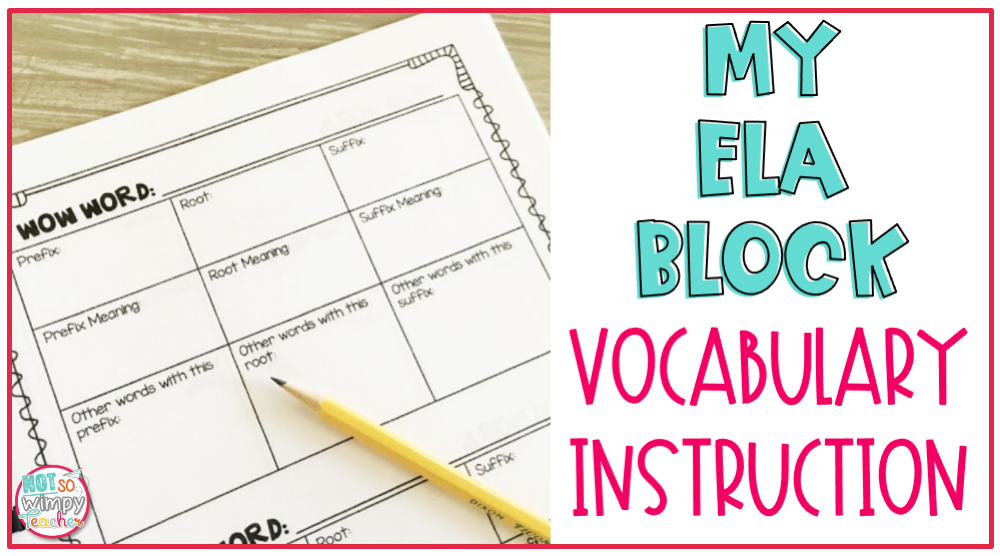
Thanks for popping in to read the third part of my ELA blog series! If you missed either of the first two posts, you can use the links below to get caught up.
Part One: Whole Group Reading Lessons
Part Two: Reading Centers
Today I am sharing all about my vocabulary instruction!
Vocabulary instruction is so important that I set aside 10-15 minutes every day for explicit vocabulary lessons and practice. This time helped my students to increase their reading comprehension and become more interesting writers.
What Words I Teach
I am going to say this and I hope that no one is offended….Just because a word appears in your reading curriculum does not mean that it is a word that belongs in your vocabulary lessons. #sorrynotsorry
Some of those words are obscure and very specific to that particular story. One story from my reading curriculum was about cowboys. One of the vocabulary words was “chaps.” It is a great word to learn when learning about cowboys. But unless they read westerns, students aren’t likely to run across that word in other grade level texts.
Instead of teaching these obscure words, I chose to teach tier two words. If you are not familiar with the different tiers of vocabulary words, here is a run down:
- Tier One: These are words that students don’t need to be taught because they already know them when they come to school. Examples: cup, baby, happy
- Tier Two: These are high frequency words that students do not already know, but will likely see in grade level text. Examples: frigid, grasp, obsolete
- Tier Three: These are content specific words that pertain to a specific subject. Examples: dividend, photosynthesis, compass
The reason that I teach the tier two words is because they are words that my students will see over and over in grade level text and on assessments. In fact, I found the words for my vocabulary units by studying grade level books. #ireadkidbooks
My Routine
I have a vocabulary routine that stayed consistent every week. I loved not having to recreate the wheel every single week!
Monday
On Mondays I introduced our five new words for the week.
I introduced words one of two different ways.
- I gave the students a sentence with the word in the sentence. Or, I asked students to use context clues to determine possible meanings. After getting some student responses, I wrote the correct definition on the board and discussed the clues in the sentence that would help you to determine that meaning. This helped my students to practice context clues and inference! #doubledipping
- Sometimes I gave my students the definition and part of speech and then asked them to try and use the word in a sentence. This helped my students to practice using the proper tenses, meanings and sentence writing. We would decide on one great sentence to write in our vocabulary journals.
Students record the definitions and a sentence for each of the five words in their vocabulary journal on Monday.
Tuesday
On Tuesday we would come up with two synonyms and two antonyms (or examples and non-examples) for each of our words. This process really helped my students to make sense of the weekly words. The examples and non-examples helped to make the new vocabulary words more concrete for my students. I also like to throw in some unique or fancy antonyms and synonyms from time to time.
Tuesday is all about talking about words and why they are or are not good examples. We have conversations about parts of speech and verb tenses. Students start to see that the best synonyms are the same part of speech and tense as the original word. Sometimes the kids will start debating a bit about which synonym or antonym we should choose to record. Since I have taught them to be respectful, these debates really just deepen their word understanding. It is magical! #insertfairydust
Wednesday
On Wednesdays, we actually took a break from our weekly words. Each Wednesday, I gave my students a “wow word.” It is just a word that has either a prefix or a suffix. (Using “wow” makes it sound like a pretty cool word!)
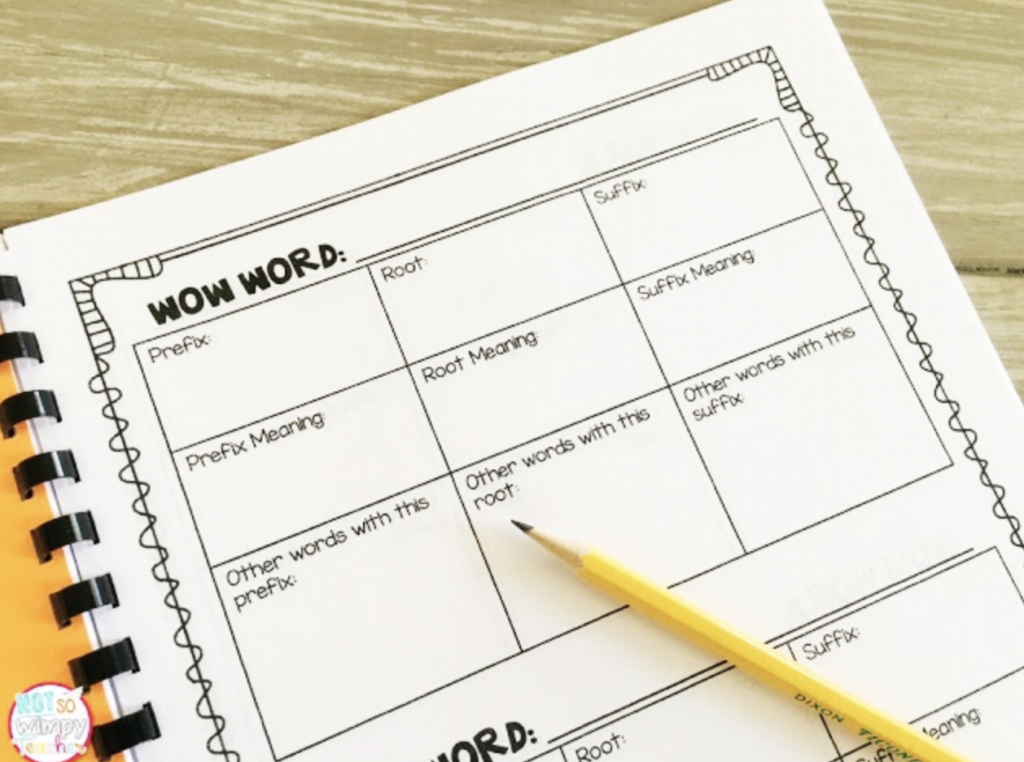
We break the word apart and identify the root and the affix. We will define the root and the affix and then we will brainstorm other words with the same root and/or affix.
Students have “aha” moments when they realize how affixes change the meaning of a word! We are still actively talking about vocabulary, but we are also hitting the reading and language standards associated with prefixes and suffixes.
Thursday
The human brain is so amazing. When I was in college I learned the art of color coding my class notes. If I made each category a different color- I could recall the information easier.
I use this same sort of idea on Thursday. By this time, my students understand the meaning of the five new words for the week, but I want to help make it memorable. I don’t want them to just be words that they learn for the week and then forget.
On Thursday I give students time to draw a small and simple representation for each of their words. The drawings must somehow show the meaning of the word. For example, when the word was gallop- one of my students drew a horse running. When the word was clutch- one of my students drew a hand holding a purse.
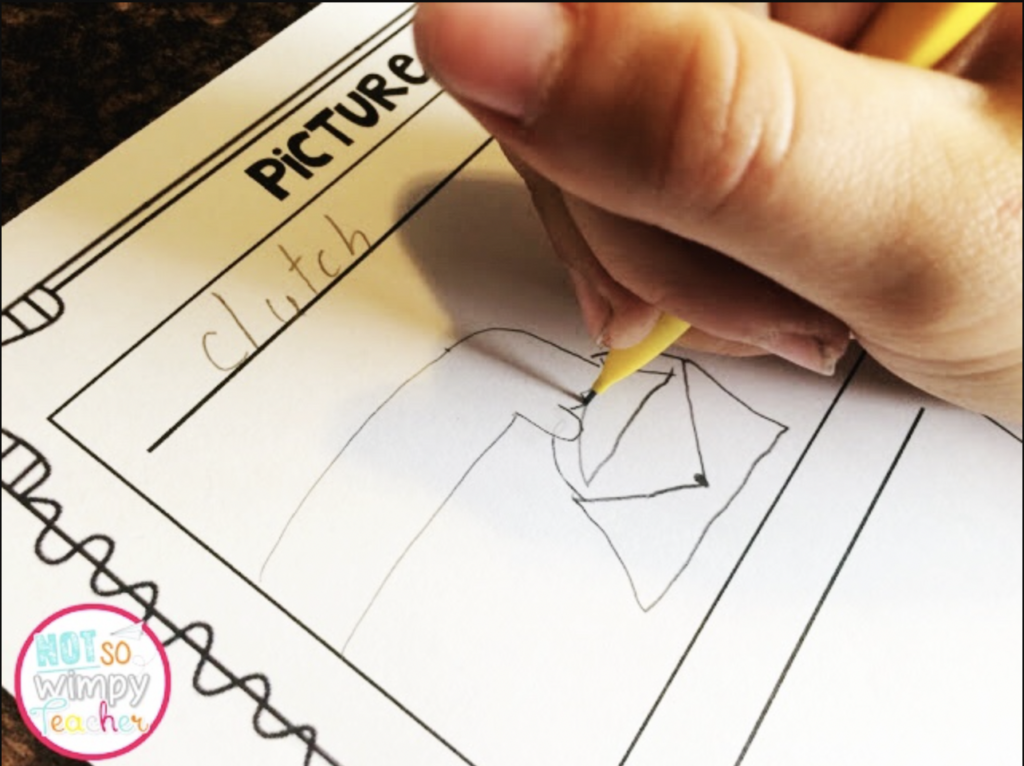
I only give students 10-15 minutes for this activity. I tell them that they don’t have time to be Picassos. They should just sketch quick pictures. If they finish early, they can go back and add color.
Friday
On Fridays we started by having fun and reviewing our words from the week (and even previous weeks!).
Vocabulary Social
Sometimes we had a vocabulary social. Each student is give a lanyard with a vocabulary word from the past couple of weeks. They review the word in their journal. I tell them that they must become experts on that word.
Then they will pretend that they are the word and walk around the classroom introducing themselves to their classmates. The conversation might sound like, “Hi, I’m literal. One antonym for me is figurative.” “Hi, literal. I am redundant. I am redundant . . . (Ha!) A good synonym for me is repetitive. Can you use yourself in a sentence?”
The conversation will go on for a couple minutes as each student shares what they know. Then they will move on to talk to different students. This is a fantastic way to review before an assessment and it is a great way to practice all those speaking and listening skills! The kids like it because it is a little goofy! Goofy is good because we tend to remember things that make us laugh.
Games
Some Fridays we played games with our vocabulary words. We used current words and words from previous weeks. I want my students to be exposed to these words over and so that they are committed to their forever memory!
Sometimes we played games as a whole group. Bingo and Jeopardy are always a hit!
But if you really want to be the coolest teacher ever, play Trashketball every now and again!
Sometimes I had students play games with partners or in small groups. I love to incorporate vocabulary words with popular board games.
Pop is another super fun, but simple to prep game.
I’ve created an amazing free resource with ten super simple vocabulary games that you can use with any word list. Grab your copy today!
Assessment
Every other Friday students did an assessment on their vocabulary words. Since the assessment is biweekly, students have longer to practice the words and they must remember the words for longer.
Vocabulary Resources
I have created resources that will make it easy peasy for you to implement a vocabulary routine like the one that I used. The units include tier 2 words, teacher guides, student journals and printables, WOW words and a game board.
Vocabulary units are available for first, second, third, fourth and fifth grade.
Shop This Post
Want to learn more about my vocabulary instruction? If you prefer to hear about it straight from the horse’s mouth, check out this FREE video. #iamaunicorn
Click HERE to check out the free video.
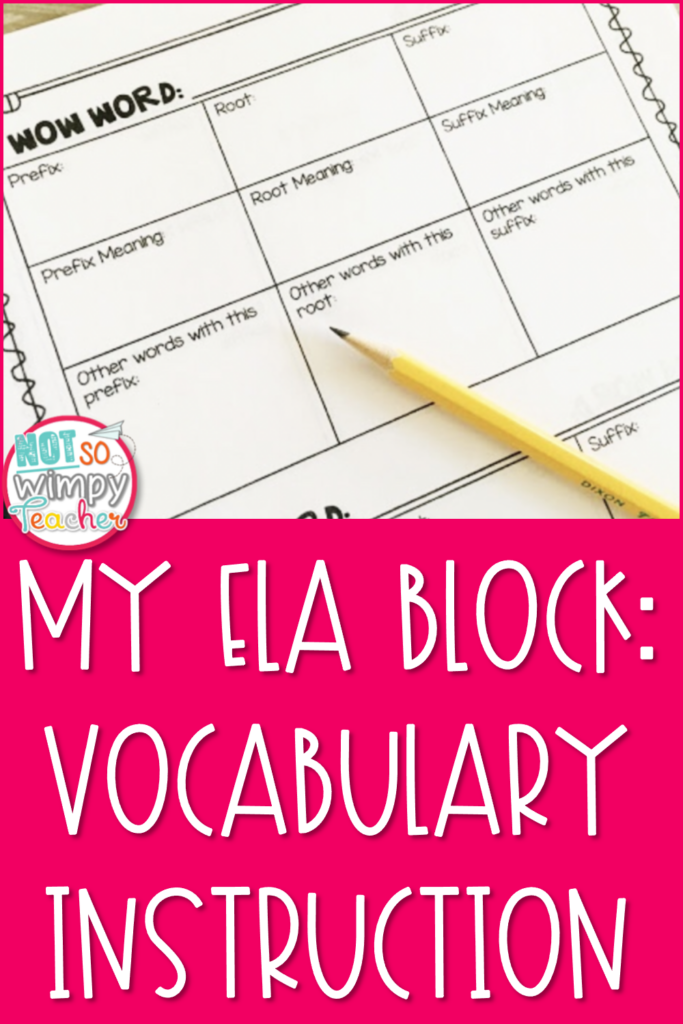
Are you ready to check out the next post in my ELA blog series?! The next one is all about teaching grammar and language without boring the kids to death! Click HERE to check it out.
Have a Not So Wimpy Day,


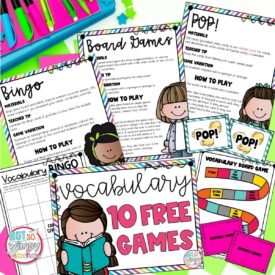
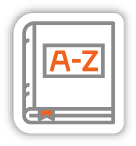
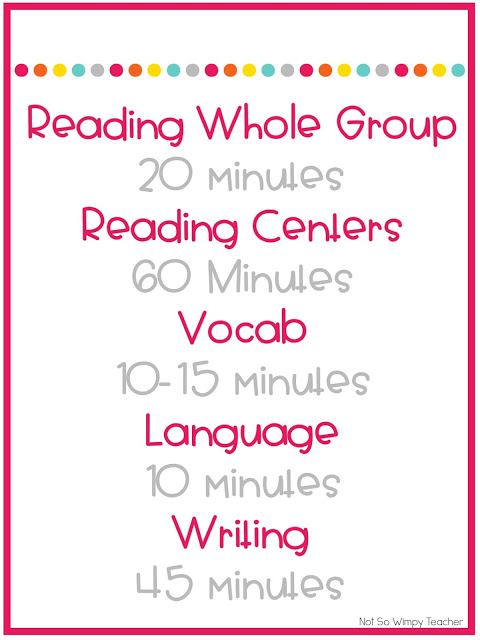

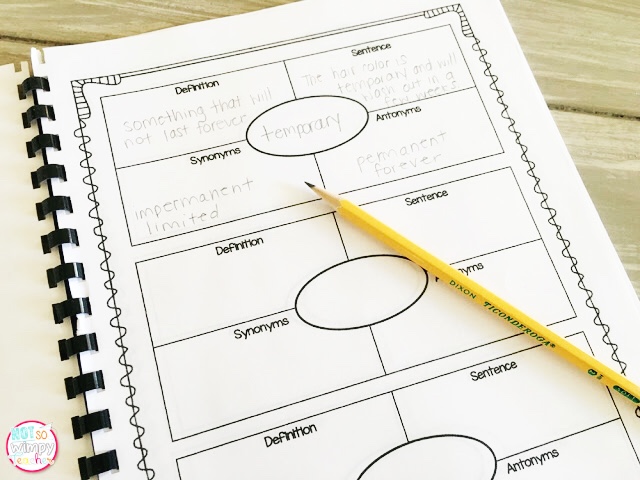
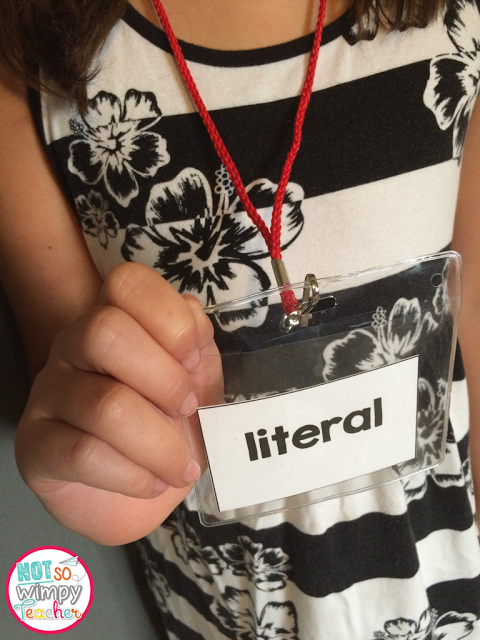

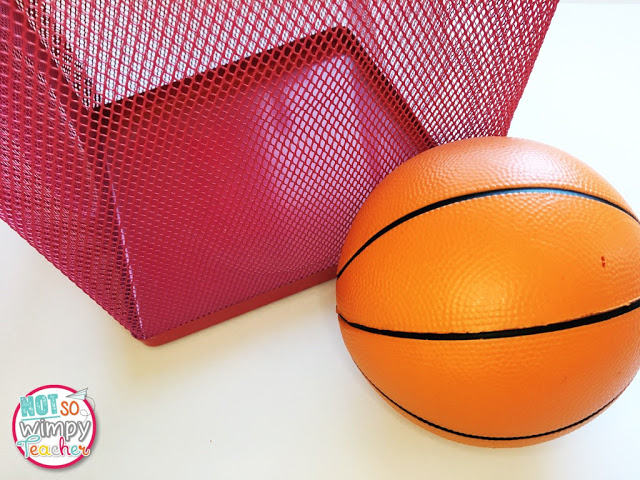
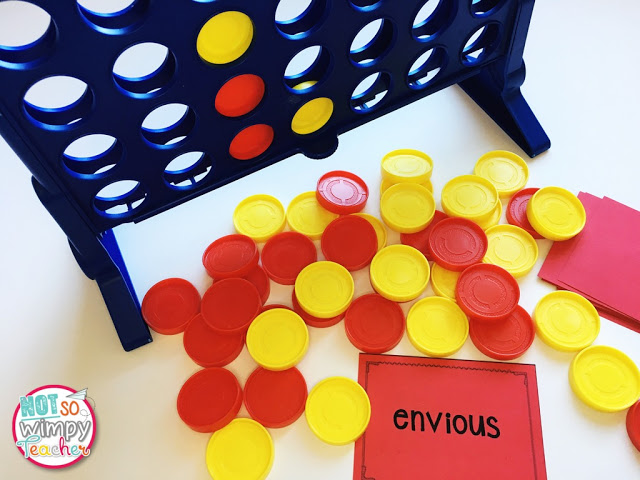
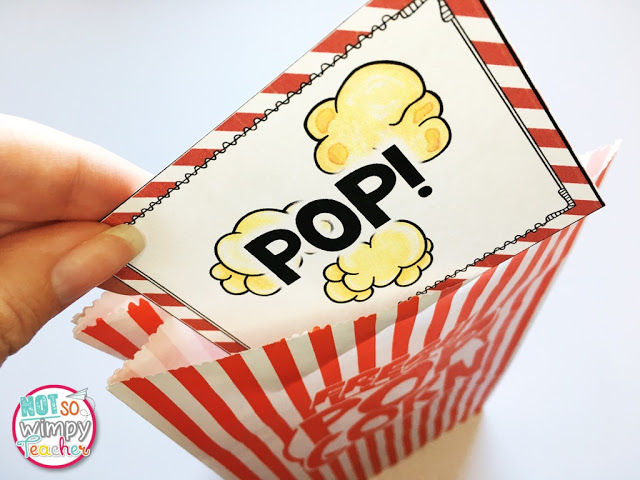
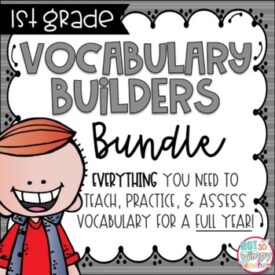
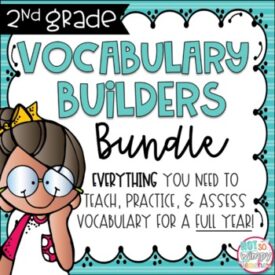
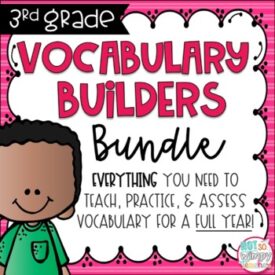
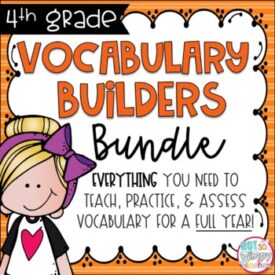
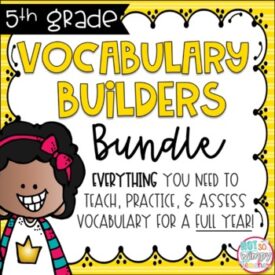

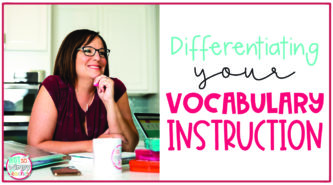
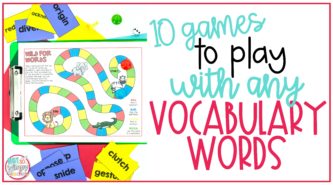












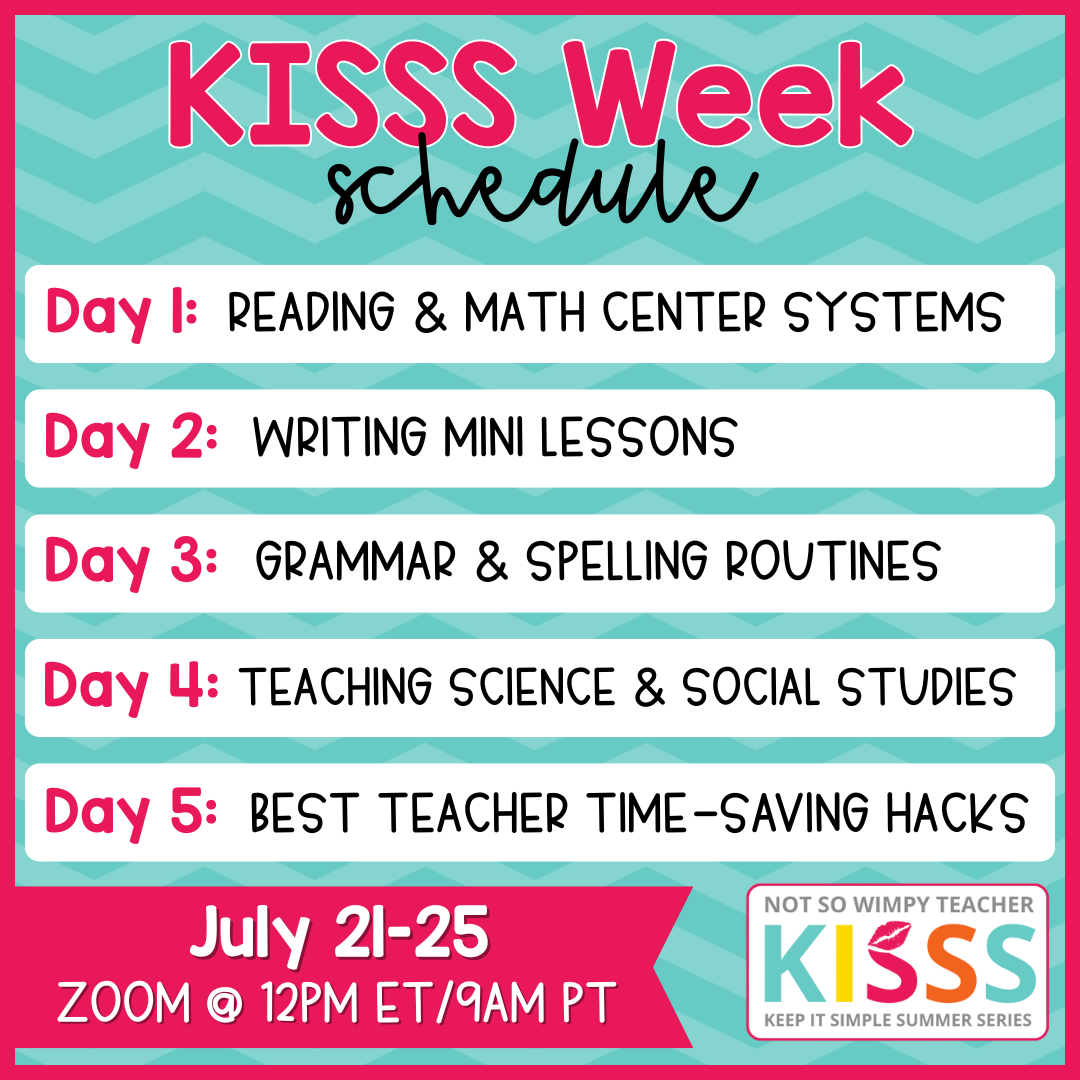 Our FREE Keep It Simple Summer Series (KISSS) for teachers in grades 2-5 is back!
Our FREE Keep It Simple Summer Series (KISSS) for teachers in grades 2-5 is back!
Hi Jamie!
THANK YOU so much for putting together these vocabulary units! Vocabulary has definitely been a deficit in my classroom year after year. After chatting with a colleague of mine who used your units in her classroom I ran to purchase them myself, and I have been using them with my 3rd grade class for 2 years now! My fellow teachers and I were asked to come to our grade meeting next week prepared to share the vocabulary routines we use in the classroom. The other teachers on my grade only teach tier 3 words from the ReadyGen curriculum, and I cannot wait to show off my students’ work using your units! I know that a question my supervisor will have is this- where do the word lists come from? I reread your blog post and see that you mentioned the words are tier 2 words. I was wondering if you had a source that you could share with me, or just anything I could show her to justify why you chose the words that you did. I put 100% of my trust into your resources, but my supervisor is very research based! I google searched “tier 2 grade 3 vocabulary words” but this is just too broad. Let me know if you can help! Thank you again!
-Danielle Scarangello
Hi Jamie~
I will be starting my fourth year teaching next month. I am blessed to be in fourth grade again. I love your vocabulary resource. One of my goals for the upcoming year was to do more with tier 2 words. One question I have is do you ever tie this together with spelling? O have given the same spelling words/tests as my grade level team members in the past. However, I feel like students just memorize the words for Friday and then forget them. They often misspell those same words in their writing after getting them correct on the tests. As you know, there’s not enough time in the day to do all that we feel like we should. Do you have any ideas/suggestions for incorporating this with spelling? We are now not required to have a separate spelling grade on report cards. However, I do think helping students learn to spell correctly is important.
Thanks for your help and for all of the wonderful tips and resources!
~Amber
Hi Amber,
I don’t recommend using these words as spelling words. I liked to keep a list of frequently misspelled words inside students’ writing folders and add to the list as necessary. If you have a required list of words to teach and you can teach that initial spelling pattern on Mondays during a whole group reading lesson. Then, work with small groups who need more support with spelling patterns during your reading groups. Hope that helps.
You have literally saved my life! I’m new to elementary and was looking for a “system” to carry out daily instruction. I can’t thank you enough!